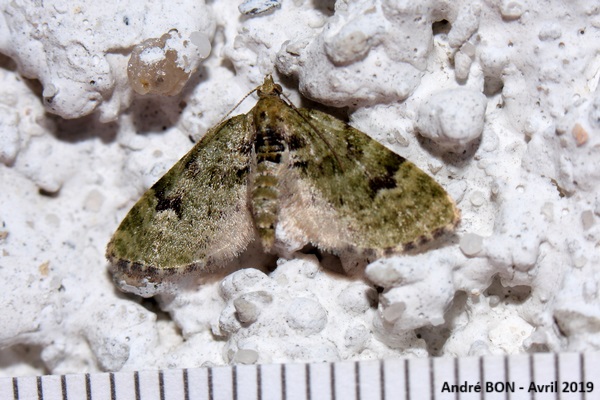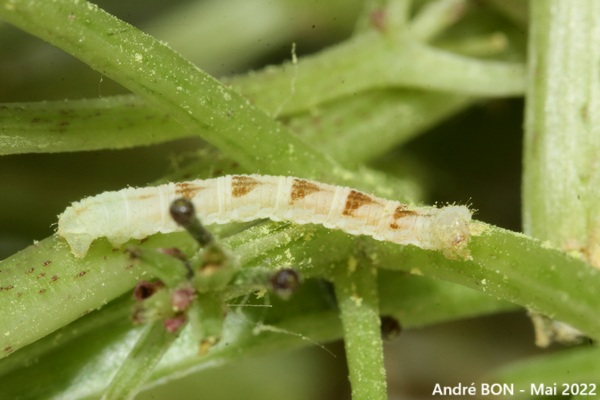


| V-pug (Chloroclystis v-ata (Haworth, 1809)) |



|
|
Scientific name: Chloroclystis v-ata (Haworth, 1809) Common name: V-pug French name: Eupithécie couronnée, Eupithécie de la salicaire. Order: Lepidoptera Suborder: Heterocera Family: Geometridae Subfamily: Larentiinae Wingspan: 14-19 mm. Biotope: Forest edges, hedges, orchards, parks. Geographic area: Palearctic region, from Europe to Japan, Near East, North Africa. Flight time: April to September. Number of generations : 2 (1 in the northern regions). Caterpillar: Greenish, pinkish, or greyish with 3 reddish longitudinal lines and triangular dorsal markings. The base of the triangle is delimited by a white line and the other two sides are straight. The caterpillar of the White-spotted Pug (Eupithecia tripunctaria) also has triangular dorsal markings, but the base is not straight and the other two sides are distinctly concave. Host plant: The caterpillars feed on the flowers of various low growing plants including Clematis (Clematis), Brambles (Rubus), Lilacs (Syringa), Honeysuckle (Lonicera), Hawthorns (Crataegus), Purple Loosestrife (Lythrum salicaria), etc. |
The V-pug has green forewings that can turn greyish in older individuals. You can distinguish the start of a black antemedian band near the costal edge which may continue to the internal edge by a curved band often weakly marked. You can also distinguish the start of a well-marked black postmedian band, near the costal edge, drawing a point that resembles the letter V. The hindwings are greyish. The V-pug overwinters as a chrysalis. |
| [To know more about the V-pug] [Next picture] [Top] |

|
The start of the antemedian band is not really well marked but the green colour and the V-shaped mark of the postmedian band allow the identification of the V-pug. |
| [To know more about the V-pug] [Next picture] [Previous picture] [Top] |

|
Every year I pick elderflowers to make an excellent aperitif. I found this caterpillar there before dipping the umbels into the white wine. I took some pictures and went to place it on another flowering Elderberry. |
| [To know more about the V-pug] [Previous picture] [Top] |

|
The edges of the triangles are very straight and the base is delimited by a white line, allowing us to confirm the identification of the caterpillar of the V-pug. |